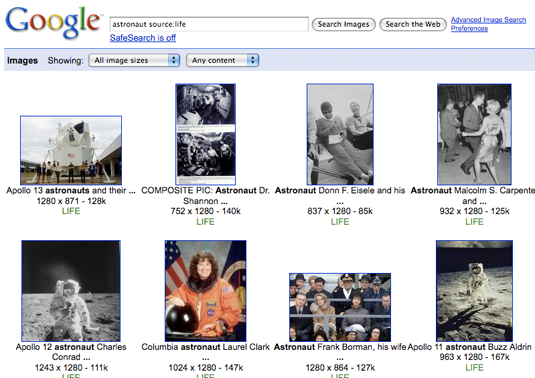 Maybe it’s because I consider the SX-70 one of the very greatest gadgets ever invented. Or perhaps it’s because I grew up a few miles from the company’s headquarters in Cambridge, Mass. Whatever the reason, I feel protective about the Polaroid brand–and boy, am I sorry to see what’s happened to it over the past few years.
Maybe it’s because I consider the SX-70 one of the very greatest gadgets ever invented. Or perhaps it’s because I grew up a few miles from the company’s headquarters in Cambridge, Mass. Whatever the reason, I feel protective about the Polaroid brand–and boy, am I sorry to see what’s happened to it over the past few years.
To recap: In 2001 Polaroid went bankrupt. In 2002, the brand was acquired by a company called the Petters Group, which proceeded to slap it on DVD players, TVs, and other products that had nothing to do with the company’s proud heritage in instant photography (as well as a few that did, such as digital cameras). Petters later bought Polaroid outright for $426 million. In 2007, Polaroid stopped making instant cameras, and in 2008 it announced plans to stop making film for its old cameras in 2009. In 2008, it became known that Petters founder Tom Petters was the subject of a federal investigation for massive financial fraud. Then Polaroid went bankrupt again.
And yesterday, Polaroid was sold again, this time for a measly $88 million to a joint venture that owns other distressed brands such as the Sharper Image and Linens ‘n Things. One of the partners said this about Polaroid:
Polaroid is an iconic brand known globally for their technical innovation and high-quality products that deliver on its reputation of ease-of-use.
Very true. But another exec added:
The Polaroid brand has immense global appeal that translates into almost all categories,…This is a terrific opportunity to unlock Polaroid’s brand value and transform its multi-channel platform of diverse and unique consumer products using leading technologies and trend-setting innovations.
Which I fear is corporate doublespeak for “We’re going to continue to license the name out for use on all sorts of consumer electronics products, most of which are commodity items which have nothing to do with the qualities that made this a great company decades ago.”
You gotta think that the late Edwin Land, Polaroid’s founder, is deeply sad if he’s out there somewhere, watching what’s become of his brainchild. (He died in 1991, after Polaroid’s golden age but before it became absolutely clear that chemistry-based instant photography didn’t have a future, and neither did Polaroid as an independent, inventive entity.) Here’s a great story from a 1972 issue of TIME that makes clear that Land was one of the greatest tech CEOs ever–a sort of combination of Steve Jobs and Steve Wozniak who thrived for decades and was also a philanthropist of note.
There is one exception to the generally dismal fate of the Polaroid name: It’s being used on photo printers and digital cameras that incorporate the printing technology developed by Zink, a Boston-area startup that’s full of Polaroid veterans. At least it’s a genuinely innovative idea that brings the original idea behind Polaroid photography into the 21st century. But I wonder if there’s an alternate universe somewhere in which digital photography was invented at Polaroid, and the company is doing better than ever?
 As if the Chicken Little “the sky is falling” privacy recriminations over the Color photo-sharing app since last week’s launch weren’t enough, privacy advocates are ready to pounce once again. This time a security researcher says that the application is vulnerable to “geolocation spoofing,” essentially meaning a user could fake his location to view images at that location.
As if the Chicken Little “the sky is falling” privacy recriminations over the Color photo-sharing app since last week’s launch weren’t enough, privacy advocates are ready to pounce once again. This time a security researcher says that the application is vulnerable to “geolocation spoofing,” essentially meaning a user could fake his location to view images at that location.
 Maybe it’s because I consider the
Maybe it’s because I consider the 
